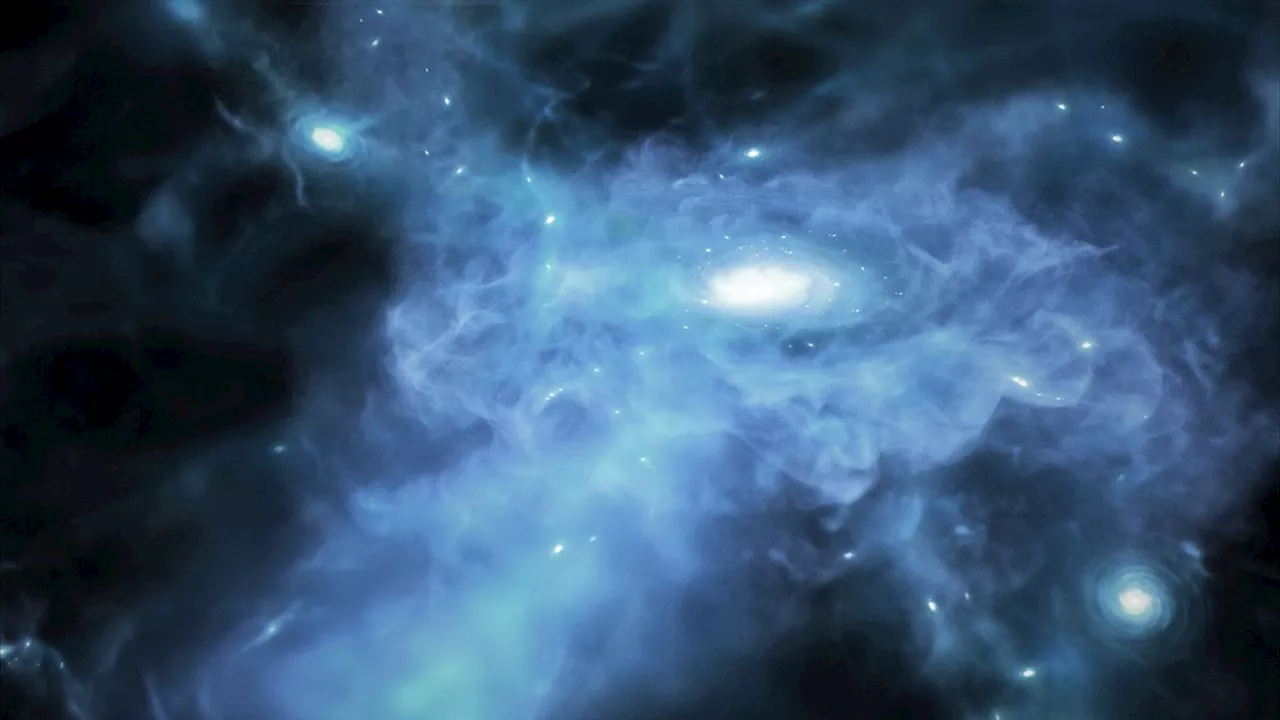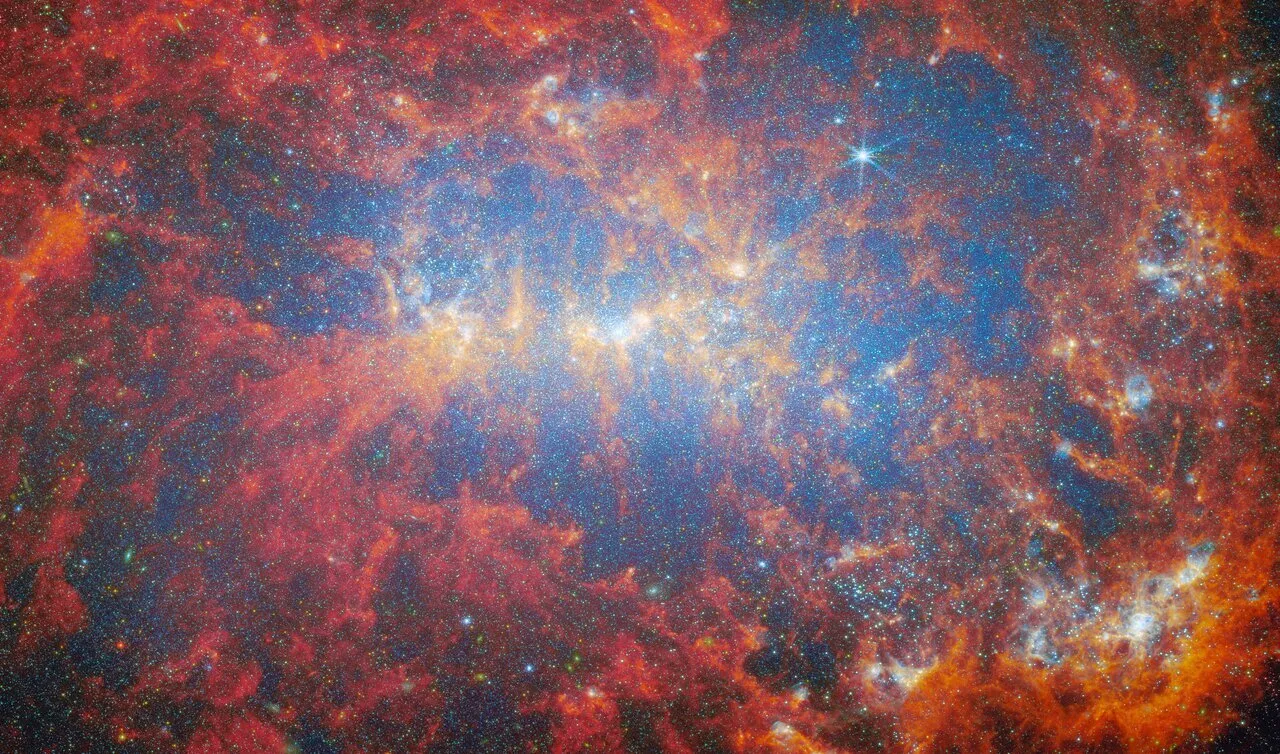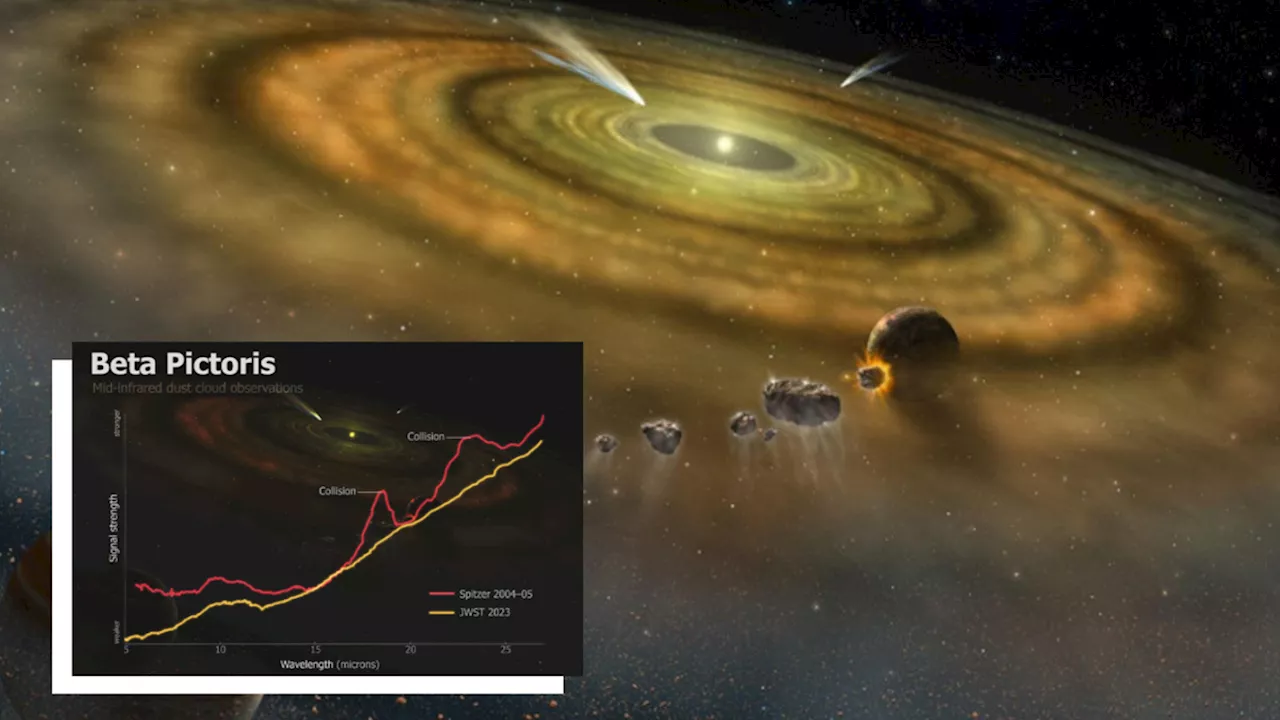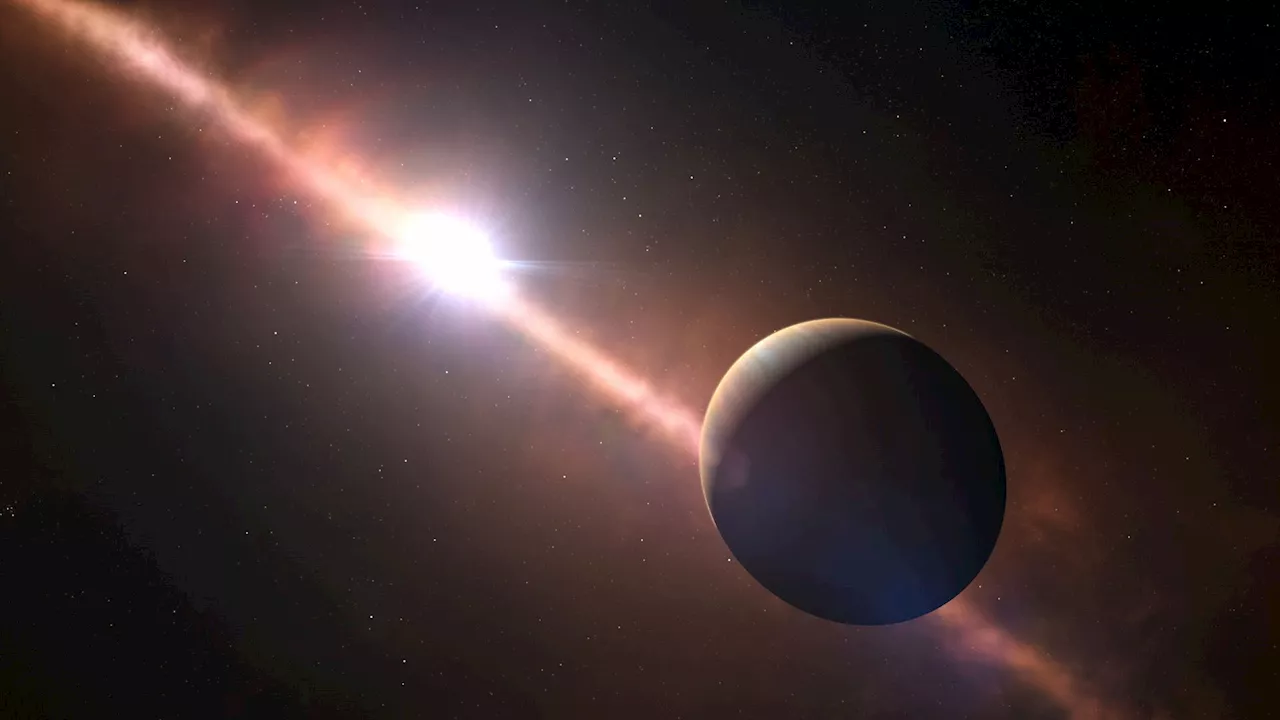Science and Technology News and Videos
In a nearby star system, two giant asteroids appear to have slammed into each other in an epic collision that kicked up a cosmic amount of dustThe apparent collision took place in the star system Beta Pictoris, which is about 63 light years away from Earth and has two gas giants named Beta Pictoris b and c, according to aChristine Chen, a university astronomer, had first studied this star system back in 2004 and 2005, analyzing infrared data from Beta Pictoris that was captured by the Spitzer...
But in 2023, the James Webb observed that all that dust — finer and smaller than pollen and having a combined heft more than 100,000 times that of theChen now surmises that Spitzer had caught the aftermath of two giant asteroids smashing into each other, with at least one of them pulverized into dust — a cosmic collision, in other words, with a scale and ferocity that boggle the mind.
Because it's so young, Beta Pictoris could potentially give us a glimpse of what the early years of our solar system must have looked like, according to Chen's research. It's at an age where gas giants have come into existence while rocky planets like Earth are possibly just forming, and mammoth asteroids are still whizzing about in the star's "terrestrial planet zone."
"The question we are trying to contextualize is whether this whole process of terrestrial and giant planet formation is common or rare, and the even more basic question: Are planetary systems like the solar system that rare?" Johns Hopkins astrophysics doctoral student and study coauthor Kadin Worthen said in a statement from the university. "We're basically trying to understand how weird or average we are.
United States Latest News, United States Headlines
Similar News:You can also read news stories similar to this one that we have collected from other news sources.
 James Webb Space Telescope spots 3 of our universe's earliest galaxiesSharmila Kuthunur is a Seattle-based science journalist covering astronomy, astrophysics and space exploration. Follow her on X skuthunur.
James Webb Space Telescope spots 3 of our universe's earliest galaxiesSharmila Kuthunur is a Seattle-based science journalist covering astronomy, astrophysics and space exploration. Follow her on X skuthunur.
Read more »
 James Webb Space Telescope spots the 2 earliest galaxies ever seen (image)Robert Lea is a science journalist in the U.K. whose articles have been published in Physics World, New Scientist, Astronomy Magazine, All About Space, Newsweek and ZME Science. He also writes about science communication for Elsevier and the European Journal of Physics. Rob holds a bachelor of science degree in physics and astronomy from the U.K.
James Webb Space Telescope spots the 2 earliest galaxies ever seen (image)Robert Lea is a science journalist in the U.K. whose articles have been published in Physics World, New Scientist, Astronomy Magazine, All About Space, Newsweek and ZME Science. He also writes about science communication for Elsevier and the European Journal of Physics. Rob holds a bachelor of science degree in physics and astronomy from the U.K.
Read more »
 Image: James Webb Space Telescope spots starburst galaxyThe James Webb Space Telescope observed the 'starburst' galaxy NGC 4449, seen in this image released on May 29, 2024.
Image: James Webb Space Telescope spots starburst galaxyThe James Webb Space Telescope observed the 'starburst' galaxy NGC 4449, seen in this image released on May 29, 2024.
Read more »
 Space photo of the week: James Webb telescope spots galaxy churning out stars in overtimeJamie Carter is a freelance journalist and regular Live Science contributor based in Cardiff, U.K. He is the author of A Stargazing Program For Beginners and lectures on astronomy and the natural world. Jamie regularly writes for Space.com, TechRadar.com, Forbes Science, BBC Wildlife magazine and Scientific American, and many others.
Space photo of the week: James Webb telescope spots galaxy churning out stars in overtimeJamie Carter is a freelance journalist and regular Live Science contributor based in Cardiff, U.K. He is the author of A Stargazing Program For Beginners and lectures on astronomy and the natural world. Jamie regularly writes for Space.com, TechRadar.com, Forbes Science, BBC Wildlife magazine and Scientific American, and many others.
Read more »
 James Webb Space Telescope spots asteroid collision in neighboring star systemRobert Lea is a science journalist in the U.K. whose articles have been published in Physics World, New Scientist, Astronomy Magazine, All About Space, Newsweek and ZME Science. He also writes about science communication for Elsevier and the European Journal of Physics. Rob holds a bachelor of science degree in physics and astronomy from the U.K.
James Webb Space Telescope spots asteroid collision in neighboring star systemRobert Lea is a science journalist in the U.K. whose articles have been published in Physics World, New Scientist, Astronomy Magazine, All About Space, Newsweek and ZME Science. He also writes about science communication for Elsevier and the European Journal of Physics. Rob holds a bachelor of science degree in physics and astronomy from the U.K.
Read more »
 Webb spots dust cloud 100,000x larger than dinosaur-extinction asteroidThese asteroid collision highlights the intense and chaotic processes that contribute to the development of star systems similar to ours.
Webb spots dust cloud 100,000x larger than dinosaur-extinction asteroidThese asteroid collision highlights the intense and chaotic processes that contribute to the development of star systems similar to ours.
Read more »
